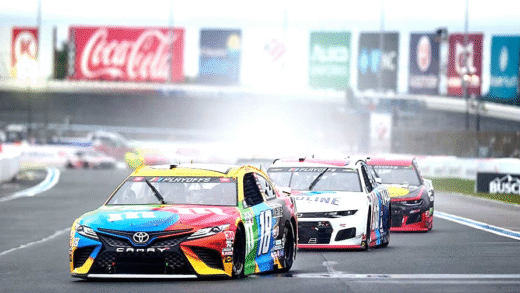The Cruise AV by General Motors represents a significant step towards the future of self-driving technology. With plans for urban implementation, addressing regulatory challenges, and comparisons to competitors, the Cruise AV is set to reshape transportation. As technology progresses, its impact on mobility and urban environments will be profound.
What is the Cruise AV: A Quick Overview
Cruise AV is a self-driving car designed by General Motors, representing a significant leap in autonomous vehicle technology. Its primary purpose is to provide a safe, efficient, and reliable means of transportation without human intervention. The Cruise AV operates entirely autonomously, meaning there are no drivers required, which positions it as a key player in the future of urban mobility.
This vehicle is equipped with advanced sensors and artificial intelligence (AI) systems that allow it to navigate complex environments, respond to road conditions, and make decisions in real time. Unlike traditional vehicles, the Cruise AV is designed for ride-hailing services, targeting urban areas where convenience and safety are paramount. The absence of a driver opens up new possibilities for mobility, especially for those unable to drive.
How Does the Cruise AV Work?
The functionality of the Cruise AV hinges on a combination of cutting-edge technologies. At its core, the Cruise AV utilizes a suite of sensors, including LIDAR, cameras, and radar, to perceive its surroundings. These sensors collect data from the environment, allowing the vehicle to create a detailed map of its location and the obstacles it encounters.
Once the data is gathered, the onboard AI processes the information to make driving decisions. For instance, it can detect pedestrians, recognize traffic signals, and anticipate the actions of other vehicles. The Cruise AV also employs machine learning algorithms to continuously improve its performance based on real-world experiences.
This combination of technology enables the Cruise AV to operate safely in various conditions, demonstrating its ability to navigate through busy streets and make split-second decisions without human input. Overall, the integration of these advanced technologies makes the Cruise AV a pioneering example of how autonomous vehicles can function in everyday scenarios.
Why No Steering Wheel or Pedals?
The design of the Cruise AV eliminates the need for traditional controls such as a steering wheel and pedals. This radical approach is based on the understanding that, in a fully autonomous vehicle, human intervention is unnecessary. The absence of a steering wheel transforms the interior space, allowing for more innovative configurations that enhance passenger comfort and usability.
This design choice reflects a shift in how vehicles are perceived. Instead of a car being merely a means of transportation, the Cruise AV becomes a mobile space for passengers to relax, work, or socialize during their journeys. This concept aligns with the growing trend of ride-sharing services, where passengers prioritize comfort and convenience.
Moreover, removing traditional controls simplifies the user experience, reducing distractions and the complexity associated with driving. Passengers can enjoy a seamless journey, focusing on their tasks or entertainment instead of navigating traffic. This forward-thinking design is a crucial aspect of the Cruise AV’s vision for the future of transportation.
The Tech Behind Cruise AV: Sensors and AI
Cruise AV technology is a remarkable blend of sensors and artificial intelligence (AI), essential for its self-driving capabilities. At the heart of its operation are advanced sensors like LIDAR, cameras, and radar. These components work in harmony to gather real-time data about the vehicle’s surroundings. For example:
- LIDAR: It uses laser light to create a 3D map of the environment, detecting obstacles with high precision.
- Cameras: They capture images and identify road signs, traffic signals, and pedestrians.
- Radar: It helps in measuring the speed and distance of nearby objects, ensuring safe navigation.
The collected data is processed by sophisticated AI algorithms. This AI not only interprets the sensor data but also learns from every journey. With machine learning, the Cruise AV continually improves its decision-making skills, adapting to new scenarios and enhancing overall safety. This technology allows the vehicle to navigate complex urban environments, respond to unexpected situations, and make safe driving decisions without human input.
Ensuring Passenger Safety: What Measures Are in Place?
Passenger safety is a top priority for the Cruise AV, and several measures are implemented to guarantee a secure ride. Firstly, the vehicle is equipped with redundant systems, meaning that if one system fails, another can take over. Key safety features include:
- Emergency Braking: The Cruise AV can automatically apply brakes in critical situations, preventing potential collisions.
- Obstacle Detection: Advanced sensors continuously scan the environment, detecting any obstacles and adjusting the vehicle’s path accordingly.
- Passenger Safety Alerts: The system provides real-time alerts about potential hazards, ensuring passengers are informed during their journey.
Furthermore, extensive testing and simulation scenarios have been conducted to evaluate the vehicle’s performance in various driving conditions. This rigorous approach ensures that the Cruise AV meets high safety standards before it hits the roads.
Benefits of a Car Without Traditional Controls
The design of the Cruise AV, devoid of a steering wheel or pedals, brings numerous benefits to passengers. Firstly, this innovative approach opens up the interior space for more comfortable and versatile layouts. Passengers can:
- Engage in Activities: With no need to focus on driving, individuals can work, relax, or socialize during their trips.
- Enhance Accessibility: The absence of traditional controls allows easier access for passengers with mobility challenges.
- Reduce Driver Stress: Without the pressure of navigating traffic, passengers can enjoy a stress-free journey.
Moreover, this design aligns with the evolving concept of urban mobility, where convenience and comfort are paramount. By eliminating traditional controls, the Cruise AV paves the way for a new era of transportation, focusing on passenger experience and safety.
General Motors’ Plans for Cruise AV Implementation
General Motors is taking significant strides to roll out the Cruise AV in real-world scenarios. The company plans to deploy this innovative self-driving car in urban areas initially, where ride-hailing services are in high demand. GM aims to partner with various ride-sharing platforms to integrate the Cruise AV into their fleets. This strategy not only enhances the convenience of transportation but also reduces congestion in cities.
Furthermore, GM is actively working on establishing designated routes for the Cruise AV to ensure safe and efficient operations. These routes will be equipped with necessary infrastructure to support autonomous vehicles. Additionally, the company is investing in public awareness campaigns to educate potential users about the benefits and safety of the Cruise AV, which is crucial for its acceptance in the market.
Regulatory Challenges and Public Acceptance
The deployment of the Cruise AV faces several regulatory challenges that need to be addressed. Governments and regulatory bodies are still developing frameworks to govern the operation of self-driving vehicles. Key issues include liability in the event of an accident and the need for stringent safety standards.
Public acceptance is another hurdle. Many potential users may feel hesitant about riding in a vehicle without a human driver. To overcome this, GM plans to conduct pilot programs that allow the public to experience the Cruise AV firsthand. This exposure is expected to build trust and demonstrate the safety features and reliability of the technology.
Comparing Cruise AV to Other Self-Driving Cars
When comparing the Cruise AV to other self-driving cars, several factors come into play. The Cruise AV is notable for its advanced technology, including its sophisticated sensor suite and AI capabilities. Unlike competitors, it is designed specifically for urban environments, which gives it an edge in navigating complex city streets.
Many other self-driving cars are still in the testing phase or focus on highway driving. The Cruise AV, however, has already undergone extensive real-world testing, proving its reliability in various conditions. This positions the Cruise AV as a frontrunner in the self-driving market, offering a unique solution that addresses urban mobility needs.
The Future of Self-Driving Technology: What Lies Ahead?
The future of self-driving technology is promising, with the Cruise AV at the forefront of this evolution. As technology advances, we can expect to see improvements in AI algorithms, leading to even safer and more efficient driving experiences. The integration of autonomous vehicles into public transport systems is likely, making urban mobility more accessible.
Moreover, as regulations evolve and public acceptance grows, the Cruise AV could pave the way for a new era of transportation. The elimination of traditional driving controls will redefine passenger experiences, turning vehicles into mobile living spaces rather than mere transportation tools. This shift will likely transform urban landscapes, reducing traffic congestion and environmental impact.





Comments are closed.